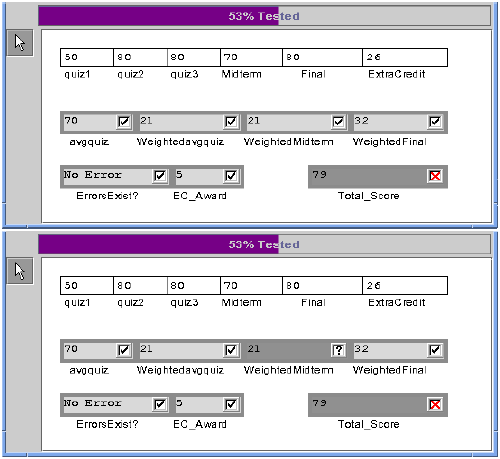Authors
Shreenivasarao Prabhakararao, Curtis Cook, Joseph Ruthruff, Creswick M. Main, Mike Durham, & Margaret Burnett
Abstract
End-user programmers are writing an unprecedented number of programs, due in large part to the significant effort put forth to bring programming power to end users. Unfortunately, this effort has not been supplemented by a comparable effort to increase the correctness of these often faulty programs.
To address this need, we have been working towards bringing fault localization techniques to end users. In order to understand how end users are affected by and interact with such techniques, we conducted a think-aloud study, examining the interactive, human-centric ties between end-user debugging and a fault localization technique.
Our results provide insights into the contributions such techniques can make to an interactive end-user debugging process.
Sample

Being human, the end-user subjects in our study made some mistakes in their testing decisions.
Here we consider the types of mistakes they made, and the impact of these mistakes on the users' successful use of the fault localization feedback:
- Top: The Grades task, with an incorrect checkmark in WeightedMidterm, as seen by subject TS1. TotalScore is the darkest, and the other 6 all are the same shade.
- Bottom: What TS1 would have seen without the wrong checkmark: WeightedMidterm would be as dark as TotalScore.
Publication
2003, IEEE Symposium on Human-Centric Computing Languages and Environments, October, pages 15-22
Full article
Strategies and behaviors of end-user programmers with interactive fault localization
